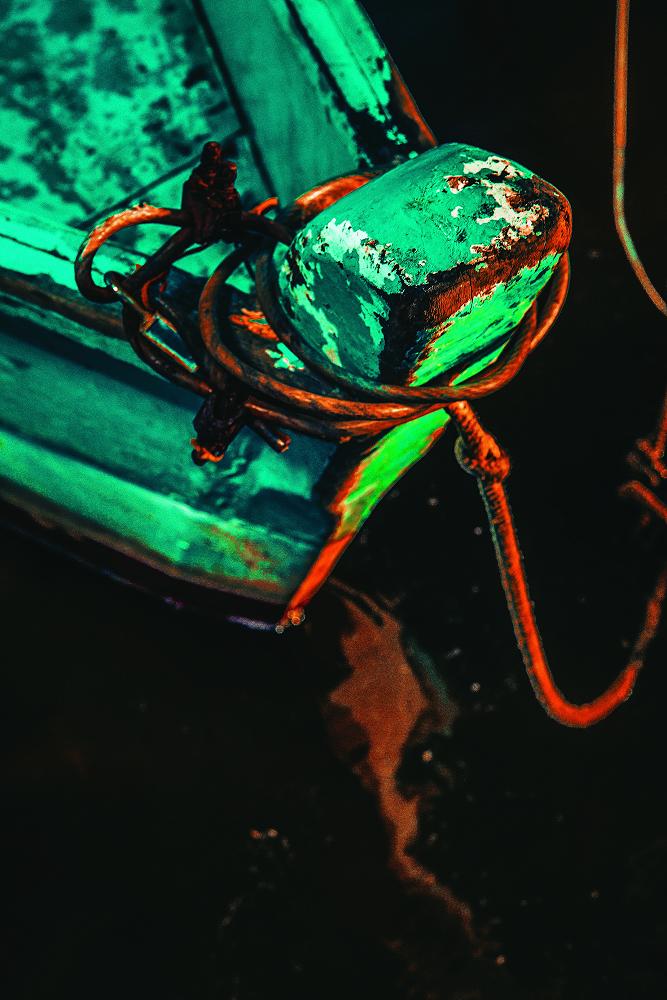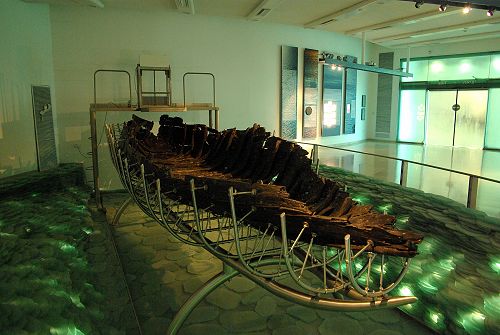
Reading Luke’s Gospel 5:1-11 with Ecological Eyes- Part Two
In part two of her series Elaine Wainwright points to how time of day, place, materials and characters all contribute to understanding Luke 5:1–11.
On my first reading of the Lucan text chosen for ecological reflection this month, my senses were alerted to the extraordinary interconnectedness of material and social elements, (which include the human) that weave their way through the fabric of this text. In the weave of habitat and human we encounter the holy. An ecological reading of this biblical story, like the integral ecology that Pope Francis addresses in Laudato Si’, recognises that “everything is closely interrelated” (par 137). Therefore this interconnectedness will characterise our reading of the Lucan text so often named “the call of Peter”.
Time, place and encounter
Luke 5:1 opens with reference to a particular time in the unfolding story of Jesus (“and it happened” is one way of translating the opening words). The verse closes with a reference to place: he was by the “lake of Gennesaret”. (Luke calls it this while the other evangelists refer to the “Sea of Galilee”). Time and space are interwoven explicitly in this opening verse, reminding the ecological reader of a significant aspect of Pope Francis’s integral ecology, namely that “time and space are not independent of one another” (par 138). Our attentiveness to the intertwining of both will shape our integral ecological consciousness and reading practice.
It is in this time and space that the narrator tells us that the crowds are “pressing in on him (Jesus) to hear the word of God”. Their bodily senses are evoked, particularly that of “hearing”, reminding readers that the senses are the vehicles for encounter between human, habitat, and holy. In the crowd’s hearing of Jesus, they encounter the holy. The Lucan narrator names their hearing as being of the “word of God”.
Fishing under the Romans
Readers might pass over the second and third verses (Lk 5: 2 -3) especially verse 2, as merely providing background to the story of the “call of Peter”. Those undertaking an integral ecological reading will be alert to the fishing industry conducted along the north-western stretches of the Sea of Galilee. It was under the control of the Roman empire and subject to a complex taxation system. While the text suggests that Simon owns his boat (Lk 5:3), such ownership did not give exemptions or escape from the system. This reading draws Laudato Si’s recognition that “there is an interrelation between ecosystems and between the various spheres of social interaction, demonstrating yet again that the ‘the whole is greater than the part” (par 141). Teaching and listening to the “word of God” must also be attentive to such social interaction and its impact on the poor.
Wooden boats
An ecological reader will also attend to Earth’s authorising of Jesus’ act and art of teaching. Jesus notices the two empty boats and their owners and chooses one boat from which to teach. The weaving of the material and social continues. He sits on the Earth element, wood, used to shape the boat, just as he sits on the mountain side to proclaim the beatitudes in Matthew. (Matt 5:1). The first-century wooden boat uncovered at the edge of the Sea of Galilee in 1986 and housed now in Kibbutz Ginosar, helps us appreciate the materiality in the story. Earth and Earth’s materials authorise Jesus’ teaching. Even the “pushing away” from the shore allows the boat to be seen by all those gathered and also for Jesus to be heard. It draws in the senses to both the proclamation and reception of the teaching.
Into the Deep
The interweaving of the material and the social continues in the narrative as Jesus invites Peter to put out into the deep water, away from the safety of the shoreline. While the language is not the same, the imagery of “the deep” may remind readers of the tohu vabohu of Genesis 1:2 - the deep out of which the universe was born. The deep into which Jesus draws Peter is in the ordinary place where he and his companions had fished all night. But Jesus draws him beyond what he had come to expect of that place.
In February, a group of international scientists announced the discovery of gravitational waves caused by two black holes merging, about 1.3 billion years ago. The call to us into the deep now, is taking us into unimaginable discoveries in relation to the unfolding of the universe itself. These, in their turn, are shaping our reading of our sacred story anew.
And, like Peter and his companions, we are amazed at what we are discovering as we “put out into the deep” of Earth and of Earth within the universe. It brings with it, as the new experience did for Peter, an awareness of our place. That is not at the centre of the universe, overseeing or controlling it. Our place is recognising that we are of Earth, from Earth, and that we will return to Earth. We are Earth-creatures just as Peter and his companions were fishers. Jesus took the word describing their occupation and shifted its focus from the fish of the Lake of Gennesaret to people.
At this time as Earth-creatures, we are being called by the earthed-Jesus of the gospel to earth-people. We are discovering Jesus anew as we put out into the tohu vabohu/the deep of our universe. We are being called to leave behind old ways of acting which ignore Earth’s others and to find the new. The words of Jesus to Simon will accompany us too: “Do not be afraid”.
Published in Tui Motu InterIslands Issue 202 March 2016.
Gallery

